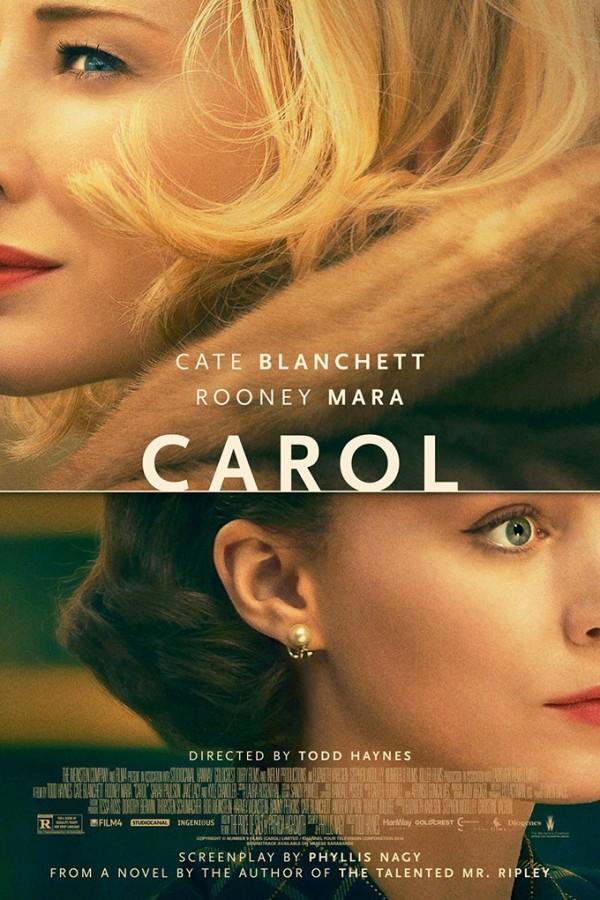Groundbreaking films screening at the Walker
From Nov. 5 to Nov. 14 the Walker Art Center holds an event honoring Todd Haynes, a boundary-breaking independent film director.
Haynes’s latest film has been getting Oscar buzz.
November 18, 2015
The past two weeks at the Walker Art Center have been filled with glam rock stars, a woman who is allergic to the 20th century and six different actors portraying Bob Dylan.
These are just several of the films in a series the Walker has titled Todd Haynes: 20 Years of Killer Films.
This event is a part of the Walker Dialogue and Retrospective series that is celebrating its 25th anniversary this year. Since 1990, the Dialogue and Retrospective events have been bringing together critics and writers with influential and boundary-breaking filmmakers. The series usually features a dialogue with the filmmaker and a screening of the filmmaker’s most influential works.
Past series have included Michel Gondry (“Eternal Sunshine of the Spotless Mind”), Gus Van Sant (“Good Will Hunting,” “Milk”) and as recently as last May, Christopher Nolan (“Inception,” “The Dark Knight”).
What all of these filmmakers have in common is their willingness to explore outside the boundaries of mainstream filmmaking. Todd Haynes is no different.
With the help of Christine Vachon’s company, Killer Films, Todd Haynes has made a reputation for himself for creating original, thought-provoking films.
The online film resource AllMovie describes Todd Haynes as being “…known for making provocative films that subvert narrative structure and resound with transgressive, complex eroticism.” As well as having that provocative edge, Haynes films’ have also been consistently associated with the New Queer Cinema movement, a movement beginning in the early 90s that encompasses queer-themed independent films, including Gus Van Sant’s “My Own Private Idaho,” and Haynes’s “Poison.”
Todd Haynes’s other films include “Safe,” about an affluent housewife who seems to become allergic to her environment; “Velvet Goldmine,” about fictional glam superstar Brian Slade; “I’m Not There.,” which includes ruminations about Bob Dylan, where six different actors play a different part of his life; and his latest film, “Carol,” about a department store clerk in the 1950s who falls in love with an older, married woman. Haynes’s filmmaking career also includes several other films as well as a TV mini-series.
The last film to be screened in the retrospective was “Safe,” which was screened on Saturday, Nov. 14. The film, released in 1995, stars Julianne Moore and has been described as a psychological horror film. However, Haynes, in a 1995 interview with BOMB Magazine, described it as a different sort of horror.
“[It’s] …a completely latent horror film where every day life is the most frightening of all,” he said.
The main character in “Safe,” Carol, has been described as being unusual. In the same interview, Haynes mentions that what makes her seem so different is that she doesn’t have that strong personality that is so frequent in films.
“People aren’t taught to project themselves in dynamic, articulate ways. And most people aren’t gorgeous or absolutely sure of who they are. I know that I make films, I’m an artist. But there are times when I don’t really know who I am,” he said.
This concern with unusual and unordinary characters are what give his films that boundary-breaking and eccentric quality. When talking about “Safe” in BOMB Magazine, Haynes expanded on the risks that each of his films include.
“I mean it [“Safe”] was an experiment, like most of my films. Each one takes various risks, but their experiments seem to locate around identification — that’s the place where we all participate in making real or making alive this two dimensional, technological gimmick projected on the wall,” he said.
About 40 people were in attendance for the screening of “Safe” on Saturday night, watching the identification of Carol dissolve into nothing but a wisp of the self we see when the film begins. As the credits rolled, the theater was silent, the powerful film seeming to have an effect on everybody.
The film, along with most of Haynes’s work, seems to illuminate and put a mirror to the problems and doubts that plague modern society, even if the film was released 20 years ago. The Walker Dialogue and Retrospective series has a pattern of bringing in filmmakers like these that have this kind of effect on viewers. Having been going strong for 25 years, it appears, with the success of the Haynes retrospective, that it should be going strong for 25 more.
For more information about the Walker Dialogue and Retrospective series, visit www.walkerart.org. For more insight into Todd Haynes, check out his newest film, “Carol,” which will be in select theaters this Friday.





